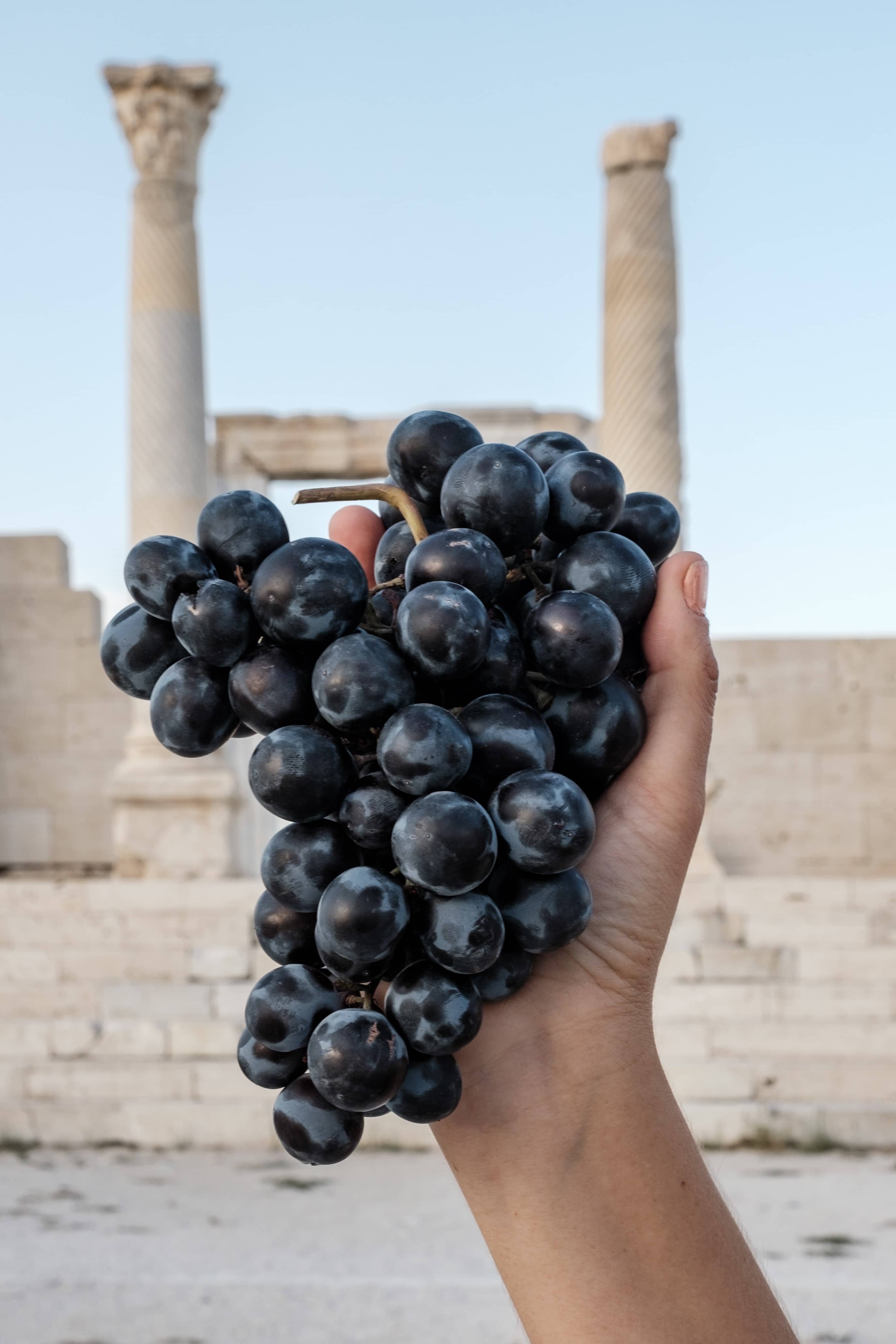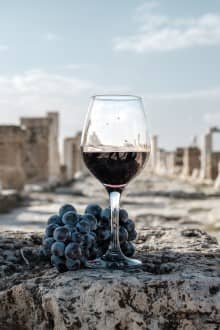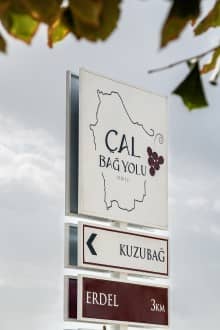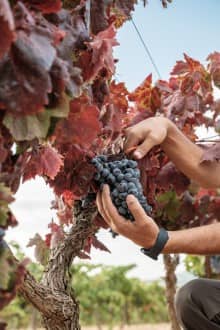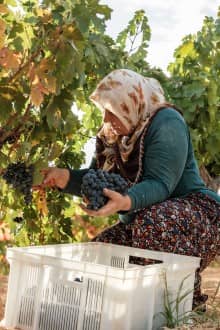

Çal Vineyard Route
The rumour says that Dionysus, the god of wine, had established a city in the region called Dionysopolis. Today, the remains of the ancient city are visible.
Today, the region is called "Çal", which means the high place, proven by the altitude of the region ranges from 700 to 1200 meters. Spreading over an area of 16.000 hectares of vineyards, Çal has many micro-climates. This unique geography makes the region ideal for growing quality wine grapes. This is why Çal is responsible for 19% of wine grape production in the country and 38% of consumed wine production in Türkiye.
Today, in Turkiye, 60 different indigenous grape varieties are used for wine production, most of them are also planted in Çal. But a special variety steals our hearts: “Çal Karası”. The story of Çal Karası resembles the relation between diamond and coal. This variety has survived due to its resilience to diseases and capacity to be used in sectors other than winemaking (such as dried grapes, molasses…etc.). Çal Karası has been widely used in producing wine as well, but always undervalued and generally used as a padding material. The main reason for underestimating this interesting grape variety is its stinginess in giving colour to the wine; it is a light grape in terms of colour. The other reason is that it is vastly produced by nearly every winegrower in the area, regardless of the sector in which it may be used. Thanks to recent developments and efforts of Çal Vineyard Route producers, attention on Çal Karası has increased rapidly. High-quality wine-making increased the awareness of Çal Karası. Wine producers around the region also started paying attention to the potential of this variety.
Sultaniye is another grape variety predominantly cultivated in the region. Primarily consumed fresh or dried, Sultaniye breathes life into modest table wines in the wine industry. Moreover, wines produced from this grape using the pasillerage method enchant sweet wine enthusiasts.
The vineyards in Çal account for 4% of Turkey's total vineyard area. Over the years, this vast area has witnessed numerous experiments with various grape varieties besides Çal Karası and Sultaniye, resulting in remarkable outcomes. Thanks to the successful Kalecik Karası clone trials carried out during the struggle against phylloxera, Çal has become a region where this unique local grape thrives such as Öküzgözü, Syrah, Chardonnay.
The wineries of the Çal Vineyard Route offer their unique stories to visitors with valuable experiences in this extraordinary geography. You can taste wine under a gazebo adorned with local flowers or pair your wine with locally adapted snacks in a modern family winery. In one producer, you can stroll with your glass in hand in a soon-to-be-museum winery dating back to the 1950s, and at another, you can savour delicious local dishes while enjoying the view of Çökelez Mountain.
As you follow the footsteps of grapes and vineyards on Çal Vineyard Road, historical and natural beauties will accompany you. You can enjoy a pleasant trekking route through the Kısık Canyon or visit the underground Pamukkale in Kaklık Cave. Paraglide from Çökelez Mountain or watch the sunrise from hot air balloons above the famous travertines. In Laodikeia, where one of the seven churches of Christianity is located, you can wander among the ruins, savour the sunset over the Büyük Menderes River at the Apollon Lermonos Temple, or trace the trails of wine in Tripolis. You can see the niche remains in Dionysopolis and enjoy a cup of coffee under the 650-year-old plane tree in Bahadınlar Village, famous for its stone houses.
Çal Vineyard Route has plenty to discover. Visit, experience, and share the incredible story behind Çal Vineyard Route!


